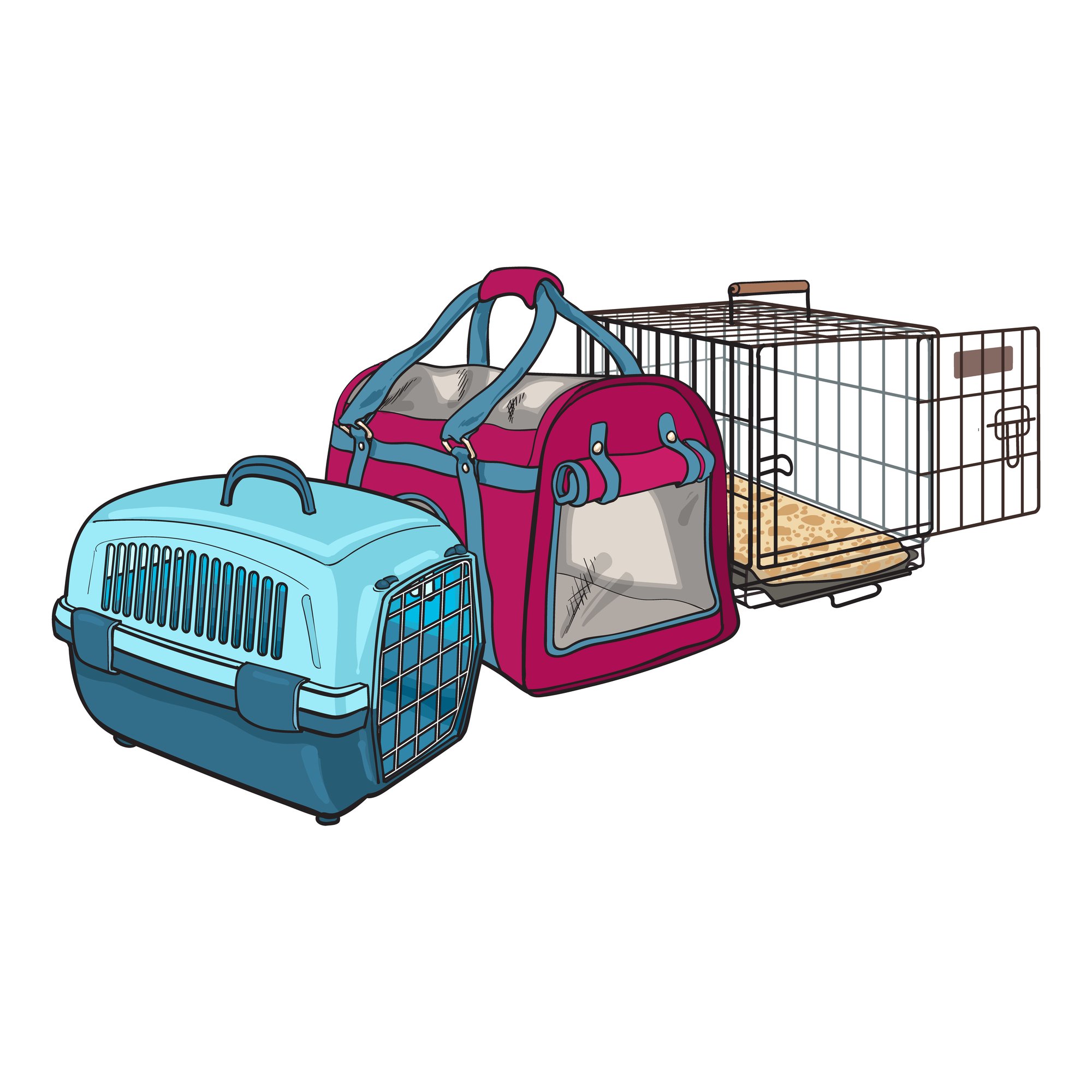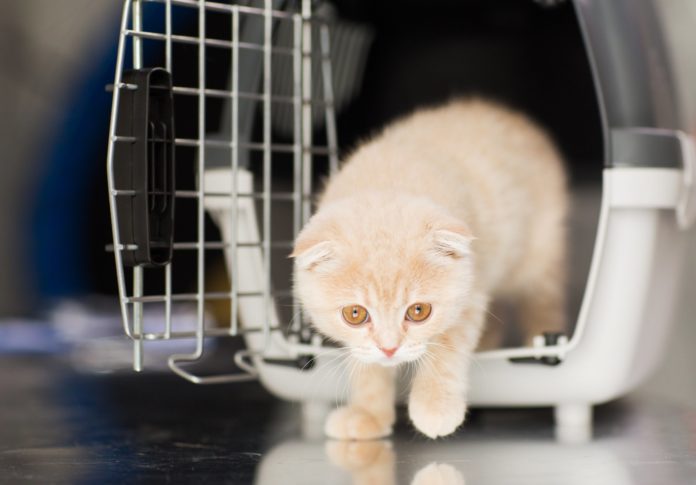You just brought home an adorable ball of fluff. She has all-new accessories, from toys to food and water bowls to a cat tree and bed to curl up in. But don’t forget a cat carrier!
Why Use a Carrier?
A cat carrier is the safest way to transport your kitten when traveling or on visits to the veterinarian (and your new kitten is going to need several of these to ensure that she is fully protected through vaccination).
While holding her in your lap might sound like a great idea at first, many kittens get squirmy pretty quickly. This restlessness could result in you getting scratched or in your kitten roaming freely throughout the car, which is a dangerous distraction for the driver. A loose cat can also easily duck out the car door or jump through a lowered window. Keeping your kitten in a carrier keeps her safe and secure through the whole journey.
Teaching your kitten to go into and be relaxed inside a carrier now will help with any time you need to use the carrier in the future.
Make It a Game
Keep your kitten’s carrier in a favorite spot in the house so that it smells like home. While playing, occasionally toss the toy into the carrier so that she has to run in to get it. You can also toss treats into the carrier, or hide some in there for her to find later. The carrier should be a normal, neutral part of your kitten’s life.
Once in a while when she goes into the carrier, close the door. Wait a couple minutes and then let her back out to resume playing.
Feed your kitten in her carrier to give her another reason to love it. This will also be helpful if you have older cats who want to try to steal some kitten food!
Loading Time
When you need to load your kitten into her carrier for a trip, try not to act like anything special is happening. Send her into her carrier for breakfast as usual, and then keep the door closed (if she is going to the veterinarian for blood work or a surgery, you may need to hold off on actually feeding her). For trips between mealtimes, toss her toy or a treat into the carrier.
If needed, you can gently load her into the carrier, but avoid forcibly stuffing. It might work, but it may cause her to resist you the next time you try to get her to go into the carrier.

Dog Crates for Kittens
The larger wire crates give your kitten a full view and have room for a litter box
When you first get your new kitten, you may not want her roaming the entire house, especially if you have other pets that you want to introduce gradually. One easy way to keep your kitten confined but able to interact with the rest of your household is to use a large dog crate. Add a litter box, food and water bowls, and a few toys to turn the crate into a perfect kitty condo. You may even have room for a small cat tree.
Solid-sided crates provide a little protection if you’re worried about a larger pet nipping at kitten paws, while wire crates allow for a 360-degree view and plenty of climbing opportunities. Fabric or “tent” crates also make great kitten housing and are lighter weight (for moving them about).
When your kitten has gained full-house privileges, crates can be useful for separating a sick cat from other pets, for separating at meal time if one cat is on a special diet, and as an apartment for a senior cat who gets lost in a large space.
Budget Minded? The most economical way to purchase a large dog crate is to check out yard sales. Make sure that the crate has all of its parts and no pieces that could poke into an eye or otherwise hurt the animal. Avoid crates with gaps that your kitten could escape through.
Choosing a Carrier
Materials and windows are your main concerns
Cat-carrier choices are plentiful. Cats don’t vary in size as much as dogs, so the size of your carrier doesn’t make much difference unless you have a large cat.
Most carriers have a front door, and some also have a top door. A top door helps when your cat isn’t sure about getting in or out, as it is easier to reach in. Be sure that you are comfortable working the mechanism on any doors that your carrier may have.
The material depends on your preference. Plastic crates are sturdy and easiest to clean. Wicker carriers are stylish in appearance, but kittens may chew on loose ends and they are more difficult to clean in the event of an accident. Soft-sided crates sometimes have mesh windows, which could be a problem for your kitten if she scratches at them.



